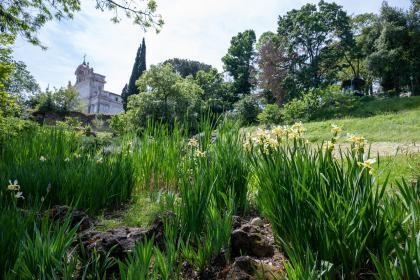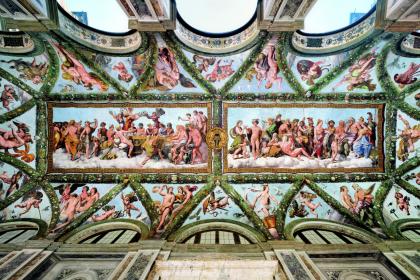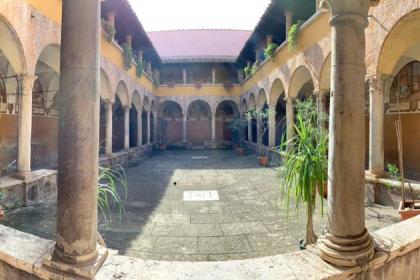
Facing the Tiber, in Via della Lungara, stands this historic Renaissance palace, begun in the first half of the 16th century on a project by Giulio Romano, a pupil of Raphael.
The building was built for the illustrious Florentine prelate Filippo Adimari, secret chamberlain of Pope Leo X. Later, it was subject to several changes of ownership. In 1552, it was purchased by Cardinal Salviati, whose brother, Bernardo, entrusted Giovanni Lippi, known as Nanni di Baccio Bigio, to continue the works. The architect completed the palace renovation in 1568 by expanding the back and modifying the facade.
In 1634, the Palace had a period of particular splendour, thanks to the realization of a suggestive garden and Baroque decorations. After a period of decline, it passed to the Borghese family in 1794. In 1820, the Papal Government acquired part of the garden and, later, the entire building as the seat of the Urban Archive.
In 1849, Palazzo Salviati was transformed into a barracks for the French troops. Property of the Italian State since 1870, it was the seat of the Military School of Rome from 1883 to 1943. Since 1971 it has housed the Centre for Defense Higher Studies.
The facade is divided into five parts by vertical rustication and has a portal in the centre, on which is a balcony supported by large shelves. On the sides are large iron windows with rusticated arches and, on the first floor, architraved windows surmounted by fake square windows. The cornice is supported by shelves with lion heads.
Inside, the monumental staircase by Nanni di Baccio Bigio leads to the main floor. Here is a chapel with beautiful 16th-century frescoes depicting the stories of the apostles by Santi di Tito. The building also houses a library on whose ceilings are important 19th-century frescoes with episodes of the Risorgimento wars, military episodes and bands of plants and flowers by the Perugian painter Annibale Brugnoli.
In the splendid garden are elements of particular charm: from the monumental head of the baroque water staircase, not completed, to the Dionysus headless marble statue, up to the small theatre, behind the monument to Victory, where the poets of the Arcadia used to gather.
Photo: Ministero della Difesa Official Website
The Botanical Garden of Rome

 Condividi
Condividi
Villa Farnesina

 Condividi
Condividi
Church of Sant'Onofrio al Gianicolo

 Condividi
Condividi
Information
 Condividi
Condividi
Location
To find out about all accessibility services, visit the Rome accessible section.











































